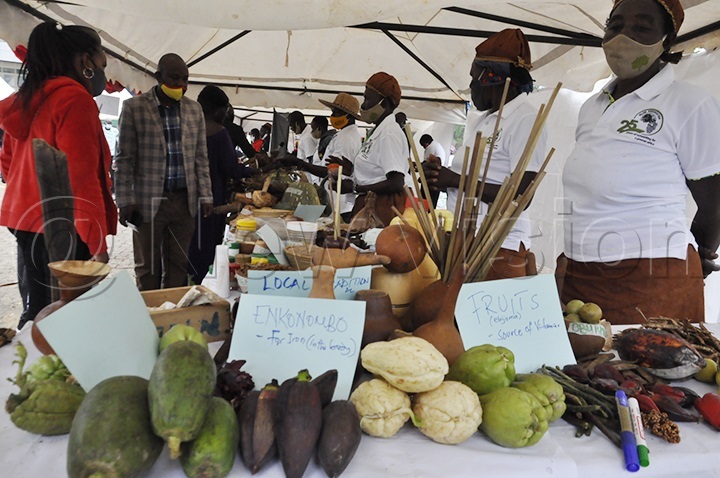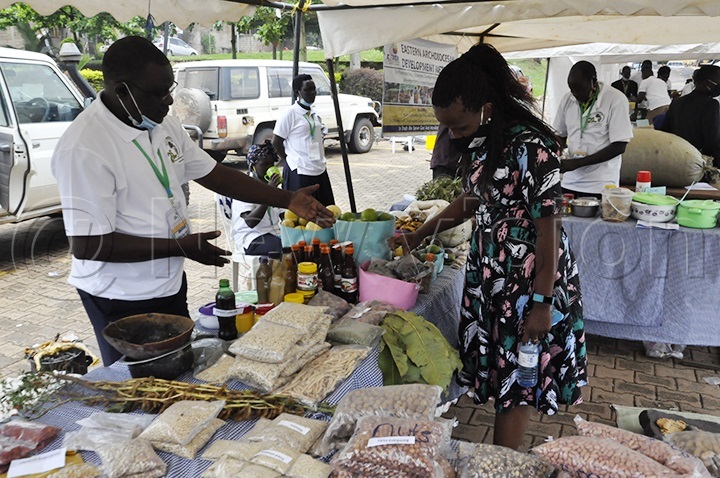A rich harvest of indigenous foods at silver springs
In the Ugandan context, indigenous foods have been defined broadly to include foods introduced to Uganda earlier than the 1900s and have been naturalised and adapted to local conditions.
FARMING | AGRIBUSINESS
To say that this parking space at Silver Springs Hotel, in Kampala, was ‘rich' in Indigenous foods on the morning of October 30, 2020 is an understatement. The correct word must be ‘wealthy'.
There were all types of indigenous foods, some of which are now termed as extinct.
For example, among the rare bush pulses included ebigagga, obuyindiyindi, enkolimbo, ensuga etc.
Then there were kyetumula, ekisebe, endaggu, obukuppa etc were some of the rare yam varieties exhibited. Among the bananas included musakala, nakitembe, muvuba, gonja etc.
Vegetables like bugga, nakati, jobyo-from bean leaves, katunkuma, egg plants etc.
Local chicken, guinea fowls, edible rats among. All crops are grown ‘organically', without the application of artificial fertilisers and pesticides.
All these were in culmination of celebrating of over 25 years of PELUM Uganda's coordination of groups engaged in advocating for the preservation of indigenous foods.
The parking yard had over 30 indigenous and organic farmers' groups exhibited indigenous foods at Kayunga, Wakiso, on October 05, 2020.
The exhibition, that was intended to show case indigenous foods was organised by Participatory Ecological Land Use Management (PELUM) Uganda and had farmers from as far as Masaka, Luwero, Wakiso, Buikwe, Iganga, Kayunga, Soroti, Gulu, Kagadi and Mukono exhibiting.

Other groups that exhibited included Africa Network 2000, Send a cow Uganda, Slow Food, EADEN from Iganga, AFIRD among others.
There was also Entebbe Botanical Gardens, show casing a long line of indigenous plants that they keep.
What are indigenous crops?
According to Stella Lutalo, PELUM Uganda, Country director, Indigenous-sometimes known as traditional foods- are those foods that people have access to locally, without having to purchase them, and within traditional knowledge and the natural environment from farming or wild harvesting.
In the Ugandan context, indigenous foods have been defined broadly to include foods introduced to Uganda earlier than the 1900s and have been naturalised and adapted to local conditions.
"These are more than just foods for they touch a broad spectrum of Indigenous peoples' lives," she said.
Adding, "This is why they must be preserved," In different societies of Uganda for instance, foods are part of culture; prepared on special ceremonies such as traditional marriages, child naming, circumcision, burials among others.
"Uganda risks losing such rich heritage if indigenous foods continue to be overshadowed," she said.
Balugu and other yams
These came in various varieties that are grown across the country, including Balugu, Kyetumula, ekisebe, endagu etc.

The climbing yam, known as balugu, has long vines, dozens of meters long, and spiny branches which collect water and allow the plant to survive dry periods.
Over time, balugu cultivation was gradually abandoned in favor of more productive plants like matoke (cooking bananas), sweet potatoes and corn.
But balugu—rich in vitamins, potassium, fiber and manganese—is still the main ingredient in many traditional recipes.
One reason for its importance is the fact it can be stored for four or five months, making it an important food resource during periods of drought. Kyetumula is the larger of these climbing yams.
"If well matured, one plant can give you as much as 100kgs," said Umar Kamya, who grows them in Buikwe.
He says that all that a farmer does is plant it near a tall tree and guide it onto it.
The older it gets, it larger the tuber is. It is harvested after at least one year.
At the moment around Kampala, one kilogram of kyetumula costs sh5,000! Endagu and ekisebe are smaller than balugu and kyetumula.
"These are grown in mounds similar to those of sweet potatoes, but smaller," Kamya says.